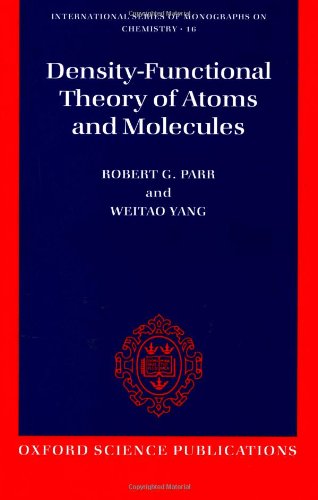Density functional theory of atoms and molecules pdf free
Par sample kecia le samedi, avril 2 2016, 22:11 - Lien permanent
Density functional theory of atoms and molecules. Robert G. Parr, Yang Weitao

Density.functional.theory.of.atoms.and.molecules.pdf
ISBN: 0195042794,9780195042795 | 338 pages | 9 Mb

Density functional theory of atoms and molecules Robert G. Parr, Yang Weitao
Publisher: Oxford University Press, USA
Unpaired electrons lead to a magnetic moment, The calculation of chemical bonds between the atoms of a molecule became possible only after the development of approximation methods and the more ubiquitous use of computers in the 1960s. This personal research is currently ongoing at UCI Furche lab on my spare time. Collectively, I studied quantum mechanical aspects of scent to calculate the energy orbital, vibration, HOMO-LUMO gap, and bond lengths of aromatic molecules to find correlation between molecular vibration and scent using density functional theory. For molecules with unpaired electrons, also called open-shell systems, DFT cannot yet be applied in a satisfactory manner. DFT-D and DFT-D2 energy corrections consider all pairs of atoms while DFT-D3 also consider triplets of atoms to account for three-body effects. Density Functional Theory (DFT) for open-shell molecules: Spin calculations. The DFT models are used to understand how changes at the atomic and molecular levels influence behaviors we can see and touch. For example, how does the behavior of water molecules and sulfur oxide impact the creation of acid rain? Excited states can be computed within the Time-Dependent Density Functional Theory (for molecules), or within Many-Body Perturbation Theory (the GW approximation). Cis-3-hexenol (C6H12O) and Cis-3-hexene-1-thiol (C6H12S) The only difference between two molecules is the oxygen and sulfur atom.